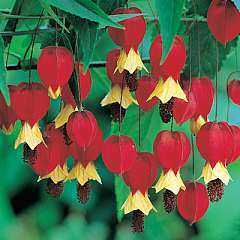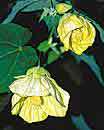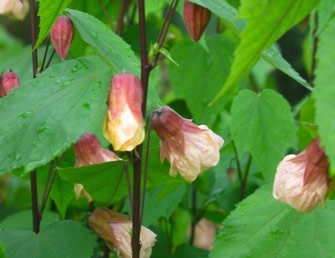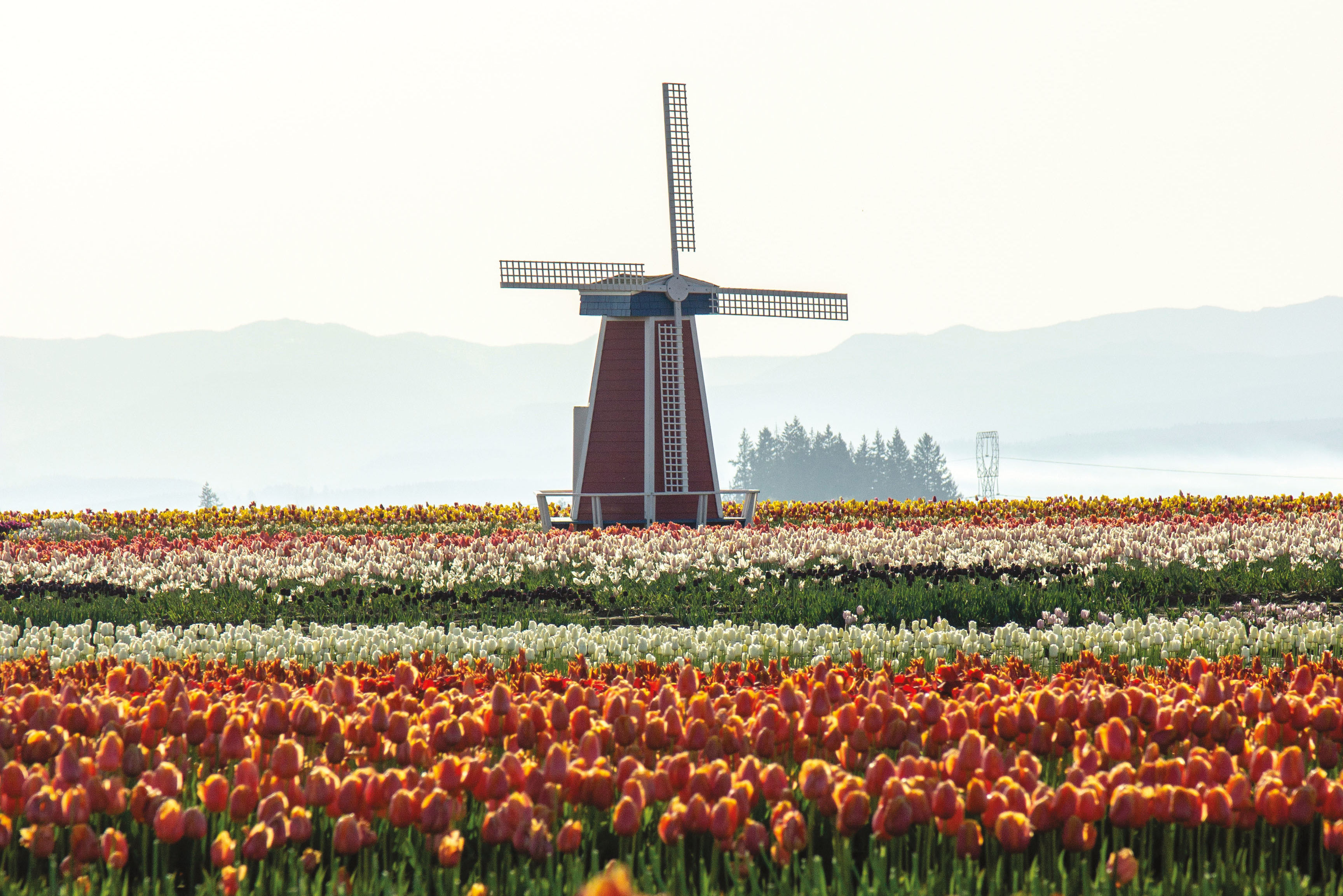Flowering Maple

Abutilon megapotamicum. Image courtesy of Thompson & Morgan.
Flowering maples – members of the genus Abutilon – aren’t easy to categorize. They are perennial, semi-evergreen shrubs, sometimes acting like deciduous perennials, they are climbers, and some tender types are used as summer annuals… the diversity of Abutilon size, form and flower color makes them incredibly versatile.
Their striking flowers contribute greatly to the summer, fall and even winter garden and they bloom forever – often right up until the winter holidays if there isn’t a deep freeze. Their lantern-shaped flowers come in a vast range of colors, from pastels (pink, peach, cream, soft red, pale yellow) and white to sizzling oranges, yellows, blood red, and hot pink. Depending on their genetic inheritance (ie, which species are in their "bloodline"), they can range from little 2-foot cuties (like Abutilon ’Li’l Red’) to 8 foot wonders like Abutilon megapotamicum.
Did I mention they are a beloved nectar source for hummingbirds?
Flowers can be elongated, slender pendants (as with Abutilon megapotamicum) or more open and flattened – very tropical looking, in either case.

Abutilon ‘Canary Bird’. Photo courtesy of Plant Delights Nursery.
Foliage can be wide and palm-shaped, vaguely like our native vine maple leaf, or slender and elongated. Some forms (not cold-hardy) have gold or cream variegated leaves.
Flowering maples love sun, rich soil, and plenty of moisture in summer. Having said that, if you give them plenty of moisture and rich soil when young, you can get away with some neglect later, once its established.
Plant tall Abutilon types at the back of a bed, behind other sturdy shrubs. That way, you don’t have to look at the twigs in spring and other shrubs help protect the plants from winter cold. Although not technically a vine, Abutilon tend to clamber and weave through other shrubs and it creates a lovely effect when the bell-shaped flowers appear through the foliage of the support shrub. Abutilon are especially nice planted on the south or west side of a structure – they can flower right into December in a protected spot. Smaller types are fantastic in summer containers, as they flower continuously, like any annual plant.
Pick a reasonably cold-hardy, Zone 8a (10-15F) variety like Abutilon megapotamicum and its cultivars, get it through the first winter and you’ll enjoy your Abutilon for years to come. Or pick whichever one tickles your fancy – most are listed at Zone 8b (15-20F) or into Zone 9 – and relish the showy flowers all summer and fall. (It will be a bonus if it comes back next year.) Sometimes they come back even when by all rights they should have died! A few A. megapotamicum cultivars including the one called Red surprised me by returning hale and hearty this spring.

Abutilon ‘Ginger Bomb’. Photo courtesy of Xera Plants.
If planting an Abutilon you hope to overwinter, don’t fertilize it from mid-August on and mulch it well after the first frost of the season (usually late October/early November).
In the perfect world, you’d plant your Abutilon in spring so it has a full season to establish a strong root system. But it’s nearly impossible to find abutilons in the nurseries in the spring – they look like bundles of sticks in a pot in April and May so you’ll rarely even see them on nursery shelves. Shop for them now, while they’re in full bloom, mulch them well through their first winter, and cross your fingers for a sweeter winter than we had last year.
Sources:
Cistus Design Nursery, Sauvie Island
Garden Fever Nursery, NE Fremont & 24th Ave (along with the Portland Nursery on Stark Street, they carry the best selection of plants from wholesaler Xera Plants, which grows a great selection of Abutilon.
Plant Delights Nursery, Raleigh, North Carolina (mail order)




